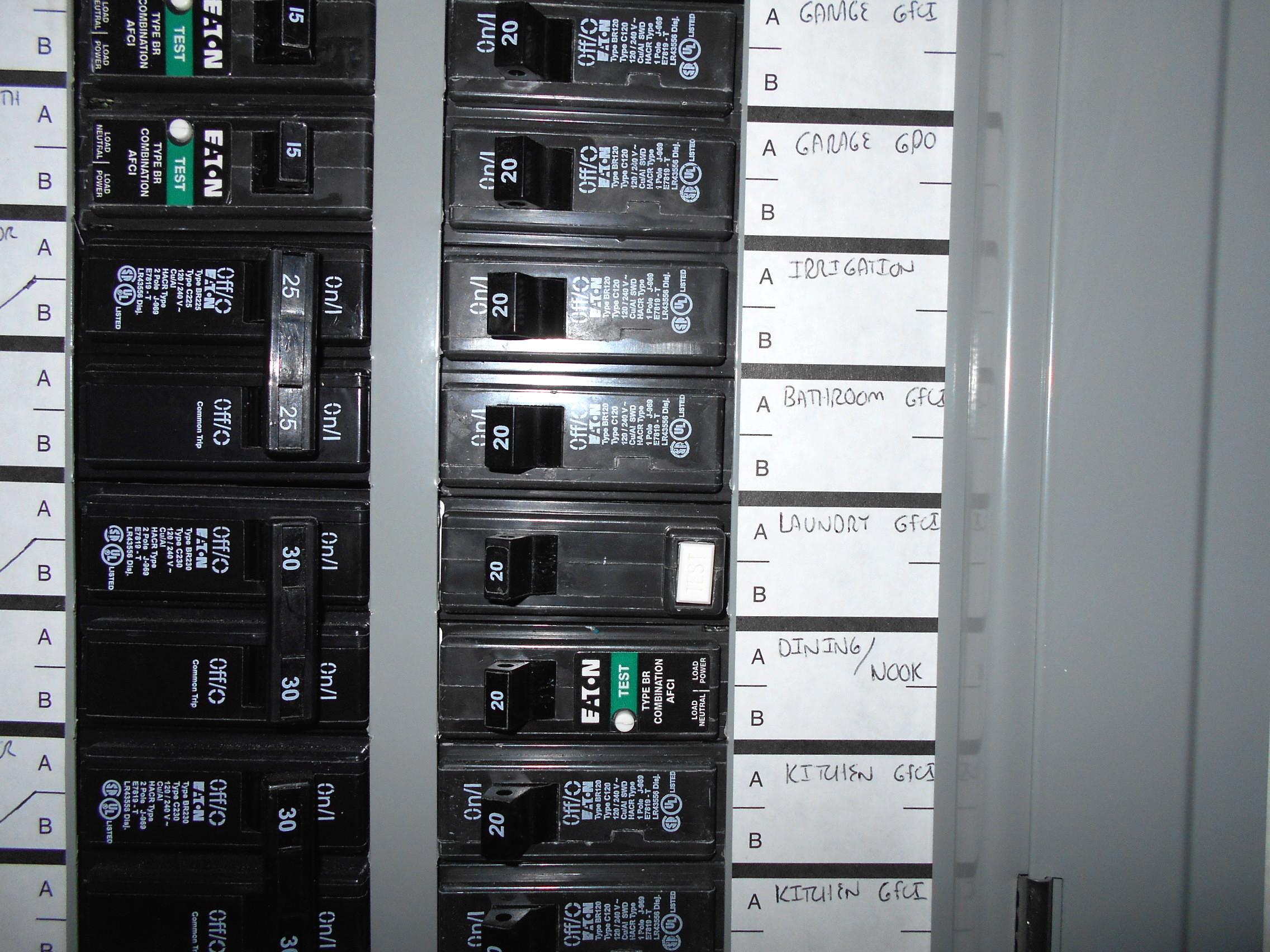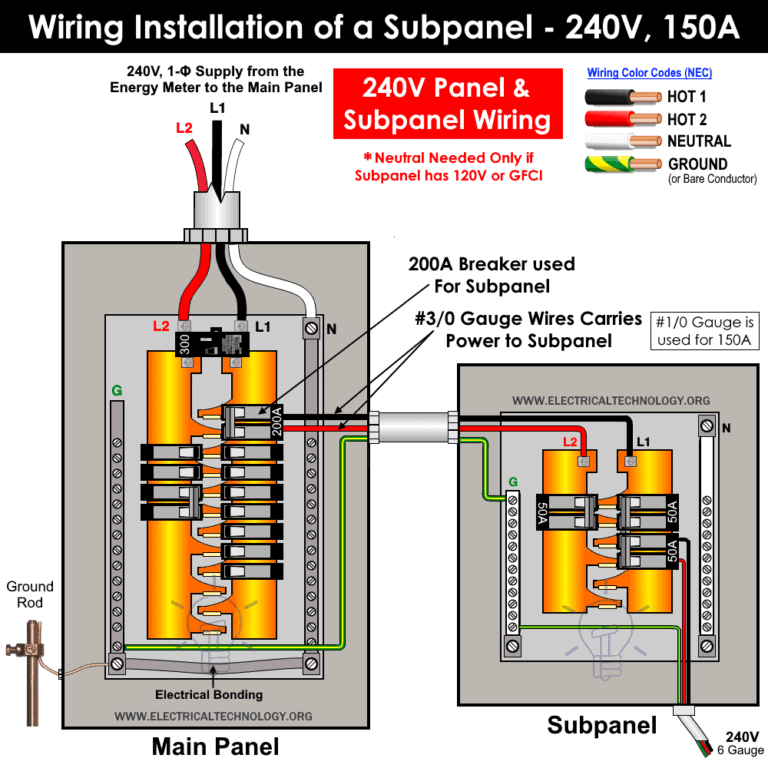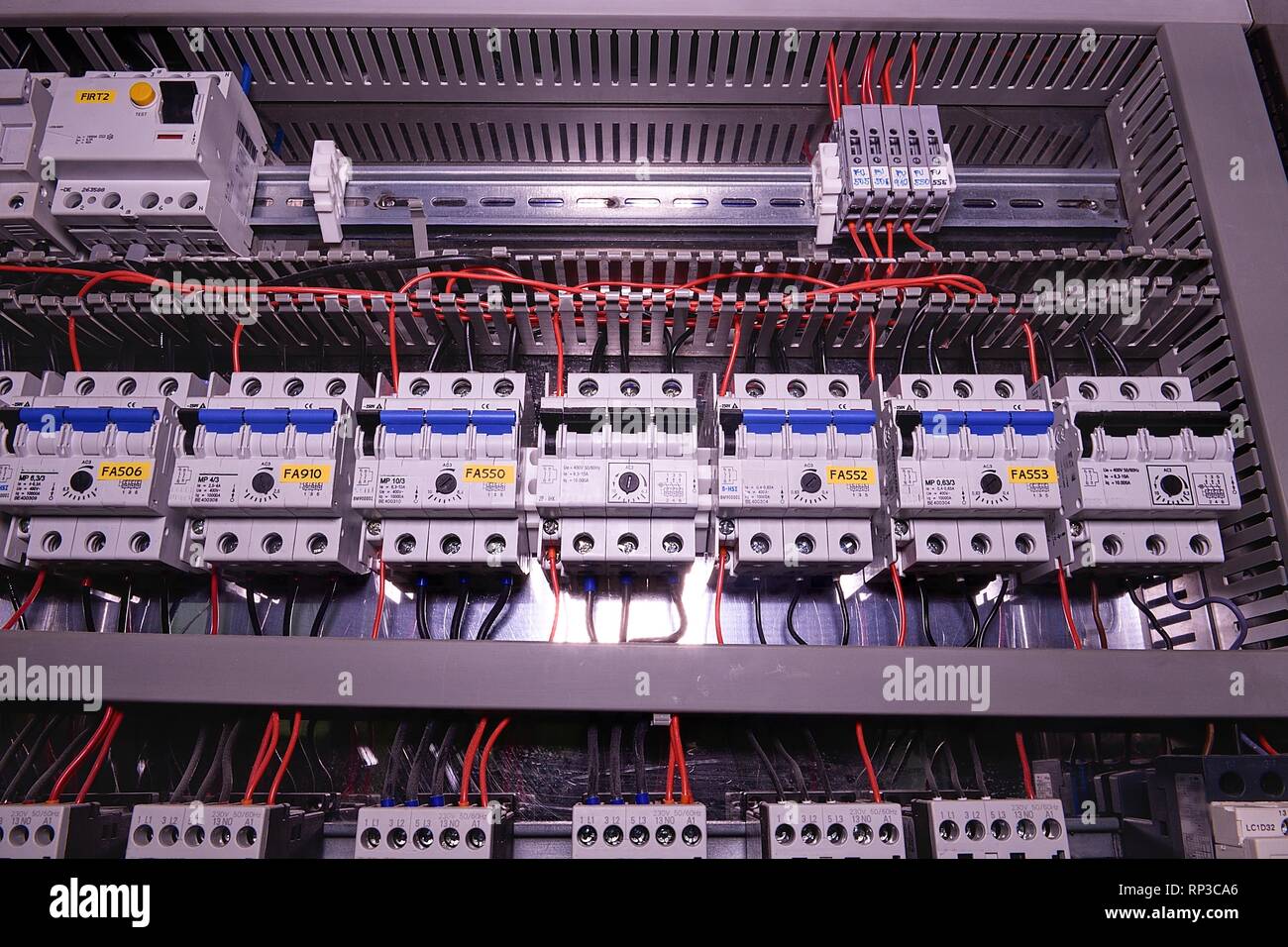Matchless Info About How Many Breakers Are In A 100 Amp Panel

Understanding Your 100 Amp Electrical Panel
1. What is a 100 Amp Panel Anyway?
So, you're wondering about the magic box in your basement or garage — the one with all the switches. That's your electrical panel, and if it's a 100 amp panel, it's the heart of your home's electrical system. Think of it like the main power distributor, taking electricity from the utility company and sending it to different circuits throughout your house.
This panel's job is to keep things safe and sound. It's designed to handle a certain amount of electrical load, and if something goes wrong — like a short circuit or too much electricity flowing through a circuit — the breakers are there to trip and cut off the power, preventing fires and protecting your appliances.
Now, why 100 amps? Well, that refers to the panel's capacity — the maximum amount of electrical current it can safely handle at any given time. Homes built decades ago often had 60 amp panels, but modern homes with all our gadgets and appliances usually need at least 100 amps, and often more.
Think of it like a water pipe: a wider pipe (higher amperage) can deliver more water (electricity) at once. A 100 amp panel is suitable for smaller homes, apartments, or dwellings with a moderate electrical demand. But if you have a big house, an electric car charger, or a lot of power-hungry appliances, you might need to consider upgrading to a 200 amp panel.
![[DIAGRAM] Wiring Diagram 100 Amp Main [DIAGRAM] Wiring Diagram 100 Amp Main](https://calderapowerservices.com/wp-content/uploads/2016/06/Installed-100-Amp-sub-panel..jpg)
[DIAGRAM] Wiring Diagram 100 Amp Main
So, How Many Breakers Are We Talking About?
2. The Million-Dollar (or at Least Electricity-Bill-Saving) Question
Okay, let's get to the burning question: How many breakers can you cram into a 100 amp panel? The answer isn't as straightforward as you might think. It's not a simple "one size fits all" kind of deal. The number of breakers isn't dictated by the amperage alone. It's all about the physical space available inside the panel itself and the types of breakers used.
Most 100 amp panels come with a certain number of "slots" or spaces where you can install breakers. A common configuration is a 20-space panel, meaning it can physically hold up to 20 standard single-pole breakers. However, there's a twist!
You can also use "tandem" or "double-stuff" breakers. These clever devices are designed to fit two circuits into a single slot. So, theoretically, if you used all tandem breakers in a 20-space panel, you could potentially have up to 40 circuits. But here's the important thing: your panel must be rated to accept tandem breakers. Check the panel's labeling or consult with a qualified electrician to be sure.
It's also really important to remember that just because you can physically fit a certain number of breakers doesn't mean you should. You need to make sure your total electrical load doesn't exceed the 100 amp capacity of the panel, or you'll be constantly tripping breakers and risking overload. Think of it like stuffing too many clothes into a suitcase — eventually, something's going to give!

The Math Isn't Always Simple
3. Understanding Load Calculation
Heres where things get a little bit more technical, but stick with me! Figuring out how many breakers you need requires understanding something called "load calculation." This involves adding up the electrical demand of all your appliances, lights, and outlets. This is definitely a job for a qualified electrician.
Each circuit breaker protects a specific circuit, and each circuit is designed to handle a specific amount of electrical load. For example, a 15 amp circuit is typically used for lighting and general-purpose outlets, while a 20 amp circuit is often used for kitchen appliances. Larger appliances like refrigerators, stoves, and air conditioners require their own dedicated circuits with higher amperage ratings.
The National Electrical Code (NEC) provides guidelines for calculating electrical loads. It takes into account things like the square footage of your home, the types of appliances you have, and even the climate you live in. The goal is to ensure that your electrical system is adequate for your needs and, most importantly, safe.
Trying to DIY your load calculation can be risky, as it's easy to underestimate the total demand. Overloading your electrical system can lead to frequent breaker trips, damaged appliances, and even electrical fires. So, again, a professional electrician is your best friend here. They can accurately assess your electrical needs and recommend the appropriate number of breakers and circuit configurations.

Everything You Need To Know About A 200 Amp Panel Express Electrical
Safety First! A Word of Caution
4. Don't Play Around with Electricity
Look, messing with electrical panels can be extremely dangerous if you don't know what you're doing. Electricity is invisible and unforgiving. It's always best to leave any electrical work to a licensed and qualified electrician. They have the training, experience, and tools to do the job safely and correctly.
Trying to add or replace breakers yourself without proper knowledge can lead to serious injury or even death. You could accidentally touch a live wire, creating a shock hazard. You could also damage the panel or wiring, creating a fire hazard. It's simply not worth the risk.
A professional electrician can also ensure that your electrical system meets all local codes and regulations. This is important for safety and for avoiding potential problems down the road, such as when you're selling your home. They will also use the right tools and equipment to ensure all connections are solid and secured.
Think of it this way: you wouldn't try to perform surgery on yourself, would you? Electrical work is just as serious and requires the same level of expertise. So, please, be smart and call a professional. Your safety (and your home) depends on it.
:max_bytes(150000):strip_icc()/electrical-service-size-of-my-home-1152752-hero-0a04c3eec7c94154a5e8f116e7fe329f.jpg)
Electrical Panel Size Calculator
Upgrading and Beyond
5. When 100 Amps Isn't Enough
So, you've learned all about 100 amp panels and how many breakers they can hold. But what if you find that your current panel just isn't cutting it? Maybe you're constantly tripping breakers, or maybe you're planning to add some major electrical loads, like an electric car charger or a new central air conditioning system.
In that case, it might be time to consider upgrading to a larger panel, such as a 200 amp panel. This will give you more capacity to handle your electrical needs and prevent overloads. Upgrading your electrical panel is a significant project that requires careful planning and execution. It typically involves replacing the entire panel, upgrading the wiring to the service entrance, and obtaining permits from your local building department.
Again, this is definitely a job for a qualified electrician. They can assess your electrical needs, recommend the appropriate panel size, and handle all the necessary paperwork and installation. It's an investment that will pay off in the long run by providing you with a safe, reliable, and adequate electrical system.
And remember, even if you're not planning any major electrical upgrades, it's a good idea to have your electrical panel inspected periodically by a qualified electrician. They can identify any potential problems, such as loose connections, corroded wiring, or outdated components, and recommend any necessary repairs or upgrades. Regular maintenance can help prevent costly problems down the road and ensure the safety of your home and family.

FAQ
6. Quick Answers to Common Concerns
Q: Can I add more breakers to my 100 amp panel if I have empty slots?
A: Possibly! Check your panel's labeling to see if it's rated to accept tandem breakers. Even if it is, make sure your total electrical load doesn't exceed 100 amps. If you're unsure, consult an electrician.
Q: What happens if I overload my 100 amp panel?
A: The breakers will trip, cutting off power to the overloaded circuit. Repeated overloads can damage appliances and wiring and even cause a fire. Yikes!
Q: How do I know if I need to upgrade to a 200 amp panel?
A: If you're constantly tripping breakers, planning to add major electrical loads (like an EV charger or a hot tub), or have a large home with many appliances, it's probably time to consider an upgrade. Have an electrician evaluate your needs.
Q: My breaker keeps tripping, what should I do?
A: First, unplug some appliances on that circuit to reduce the load. If it still trips, there might be a short circuit or other electrical issue. Call an electrician to investigate. Don't just keep resetting the breaker!